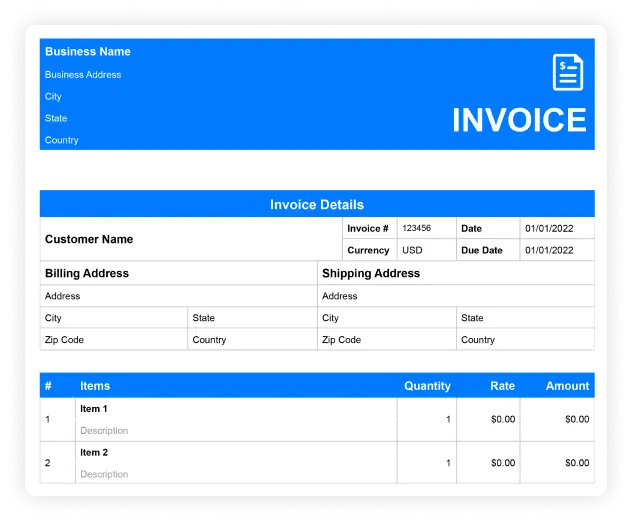Jewelry Invoice Format
A Jewelry Invoice Template helps jewelers bill clients for custom designs, repairs, and retail purchases.
- Lists item details, including gemstone specifications and design fees.
- Tracks repairs, resizing, and custom work alongside retail purchases.
- Ensures transparency in billing for high-value transactions.

Download Customizable Jewelry Invoice Format
Create Your First Customize Jewelry Invoice Template With CaptainBiz
What Should Be Included in Jewelry Bill Format
Jewelry Store and Client Information:
Include the jewelry store’s contact details along with the client’s name and address for accurate billing and communication.
Item Description:
Provide a detailed description of each jewelry piece, including specifications such as metal type, gemstone details, and customization work. This helps clarify the value and justifies the total cost.
Service and Repairs Breakdown:
Itemize services like resizing, repairs, or custom work to ensure transparency. This helps clients understand the additional costs incurred for these services.
Payment Terms:
Clearly specify the payment terms, including due dates, preferred payment methods, and any installment options. This ensures timely payments and smooth transactions.
Invoice Number and Date:
Include a unique invoice number and the date of issue for record-keeping and easy tracking of each transaction.
Special Instructions or Notes:
Include any warranty information, special care instructions for the jewelry, or additional notes related to the purchase or repair.
So what are you waiting for?
Frequently Asked Questions (FAQs)
A jewelry invoice template is used by jewelers to bill clients for purchases, custom designs, repairs, and other related services.
It should include store and client information, item descriptions, service details, payment terms, and invoice dates.
Yes, they can itemize custom orders, including specific design fees and materials used, to provide clear billing for personalized pieces.
It ensures clients understand the value of each item, reducing confusion and increasing transparency for high-value purchases.
It ensures accurate billing for high-value transactions, improves financial management, and builds client trust with detailed invoices.



